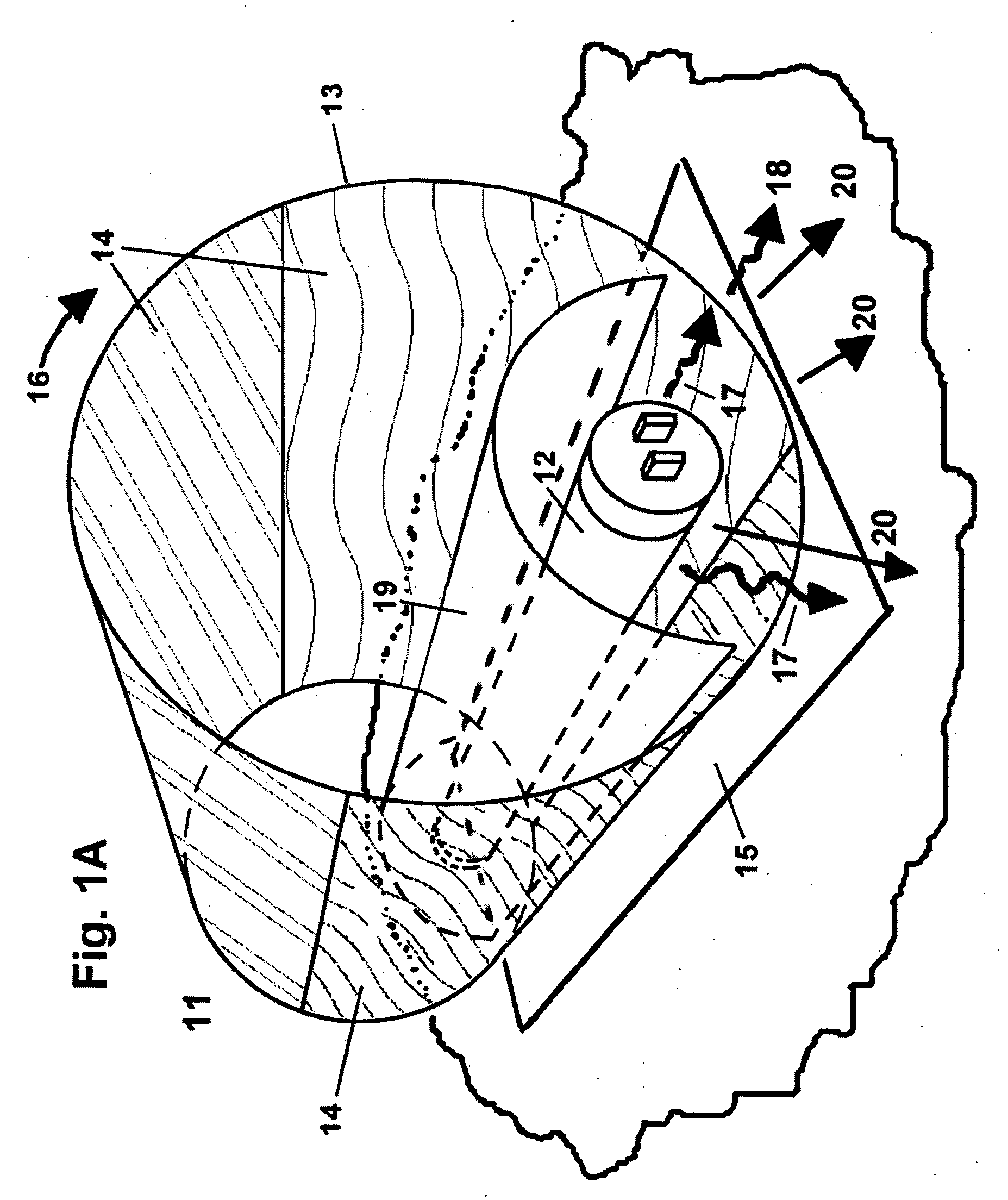Variable wavelength ultraviolet lamp
a technology of ultraviolet lamps and wavelength bands, applied in the direction of spectral modifiers, x-ray tubes, optical radiation measurement, etc., can solve the problems of shortening the life of the bulb, not being able to select among different wavelength bands during the operation of the lamp, and having to use a different wavelength band of the bulb for each wavelength band
- Summary
- Abstract
- Description
- Claims
- Application Information
AI Technical Summary
Benefits of technology
Problems solved by technology
Method used
Image
Examples
embodiment 11
[0034] Turning now specifically to FIG. 1A, the first preferred embodiment 11 uses as a primary light source 12 a low pressure mercury vapor discharge lamp, which emits UV C light 17 largely at about 254 nanometers (nm) wavelength and which is powered by an electrical supply. Such mercury vapor discharge lamps are widely available in a variety of sizes and configurations, and are known to provide reliable and effective operation. In the embodiment of FIG. 1A the primary light source 12 is surrounded by a cylindrical substrate 13 on which are disposed a plurality of wavelength-transforming materials 14. The cylindrical substrate 13 may be rotated about its axis, as shown by arrow 16, around the primary light source 12 in such a manner as to place one or more of the wavelength-transforming materials 14 in front of the primary light source 12 in a preferred direction of light emission 20 such that light of a different distribution of wavelengths 18 may be emitted from the apparatus. Al...
embodiment 31
[0039] A second preferred embodiment, shown in FIG. 3, comprises wavelength-transforming materials that are disposed on a substantially flat unit that allows selection of the desired wavelength band of emitted light. In the second preferred embodiment 31 shown in FIG. 3, the source of primary light 12 is located behind substrate 33, which is substantially flat. A plurality of wavelength-transforming materials 34 are, in turn, disposed on substrate 33. To select one or more wavelength-transforming materials to emit light in the preferred direction of light emission 20, the substrate 33 is moved in its plane by a sliding movement, illustrated by arrow 36, such that the wavelength-transforming materials selected are positioned in front of the primary light source 12 in the preferred direction of light emission 20. Preferably a reflector unit 19 is placed so as to direct light from the primary light source toward the selected wavelength-transforming material 34 and in the preferred dire...
embodiment 41
[0041] A third preferred embodiment 41 is shown in FIG. 4. In apparatus 41 the primary light source 12 is located adjacent to substrate 43 which, in this case, is substantially flat and disc shaped and on which are disposed a plurality of wavelength-transforming materials 44 comprising sectors of the disc. Selection of one or more of the wavelength-transforming materials, or a transparent portion, is made by rotating the disc-shaped substrate in its plane, as shown by arrow 46, such that one or more of the wavelength-transforming materials selected from the plurality of wavelength-transforming materials 44 is positioned in front of the primary light source 12 in the preferred direction of light emission 20. Here also, a reflector unit 19 is preferably employed to direct light from primary light source 12 toward the selected wavelength-transforming materials 44 and in the preferred direction of light emission 20 and away from unselected wavelength-transforming materials. Preferably a...
PUM
 Login to View More
Login to View More Abstract
Description
Claims
Application Information
 Login to View More
Login to View More - R&D
- Intellectual Property
- Life Sciences
- Materials
- Tech Scout
- Unparalleled Data Quality
- Higher Quality Content
- 60% Fewer Hallucinations
Browse by: Latest US Patents, China's latest patents, Technical Efficacy Thesaurus, Application Domain, Technology Topic, Popular Technical Reports.
© 2025 PatSnap. All rights reserved.Legal|Privacy policy|Modern Slavery Act Transparency Statement|Sitemap|About US| Contact US: help@patsnap.com



